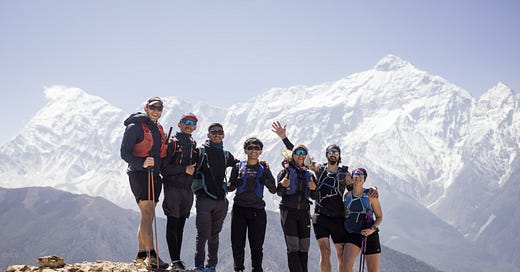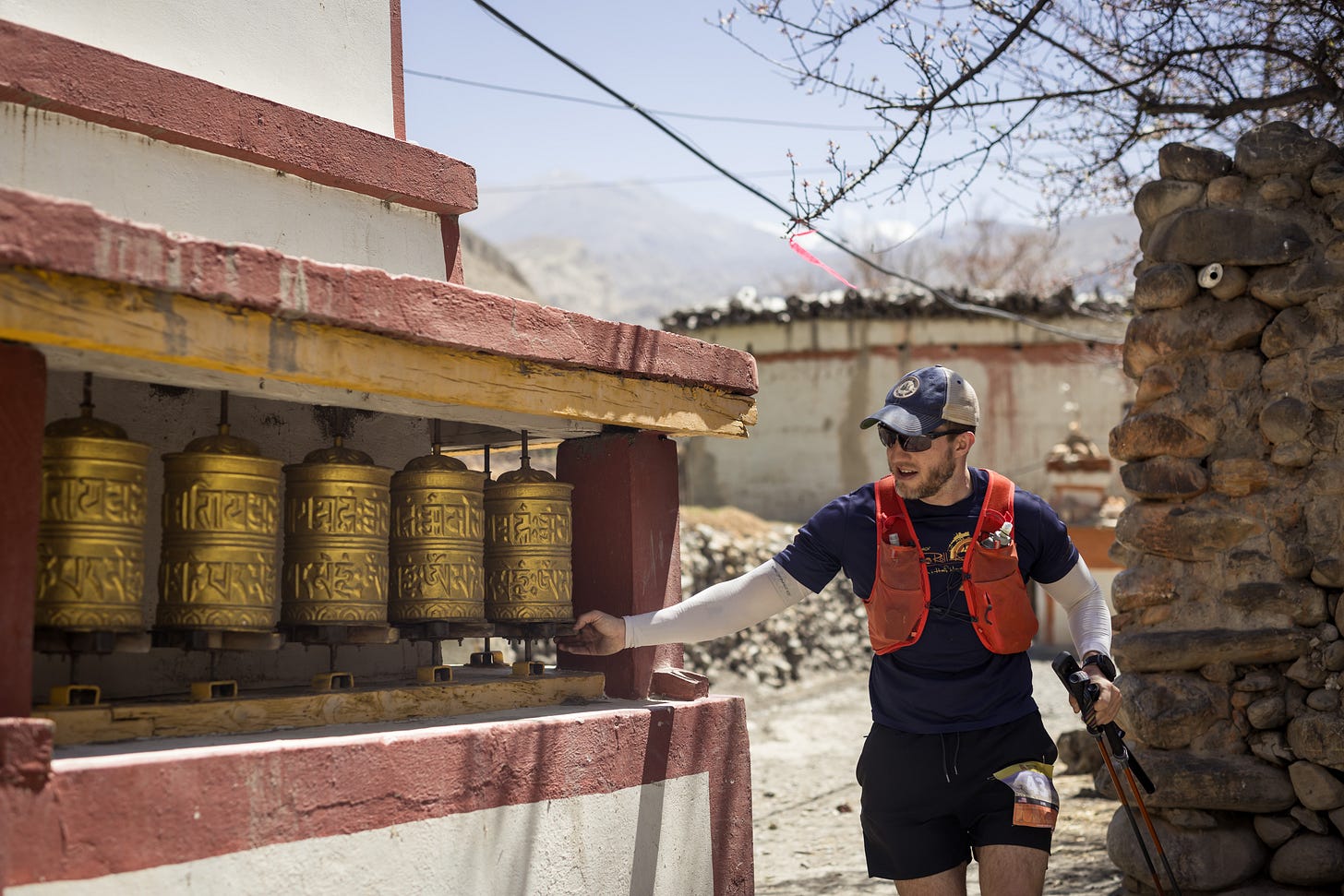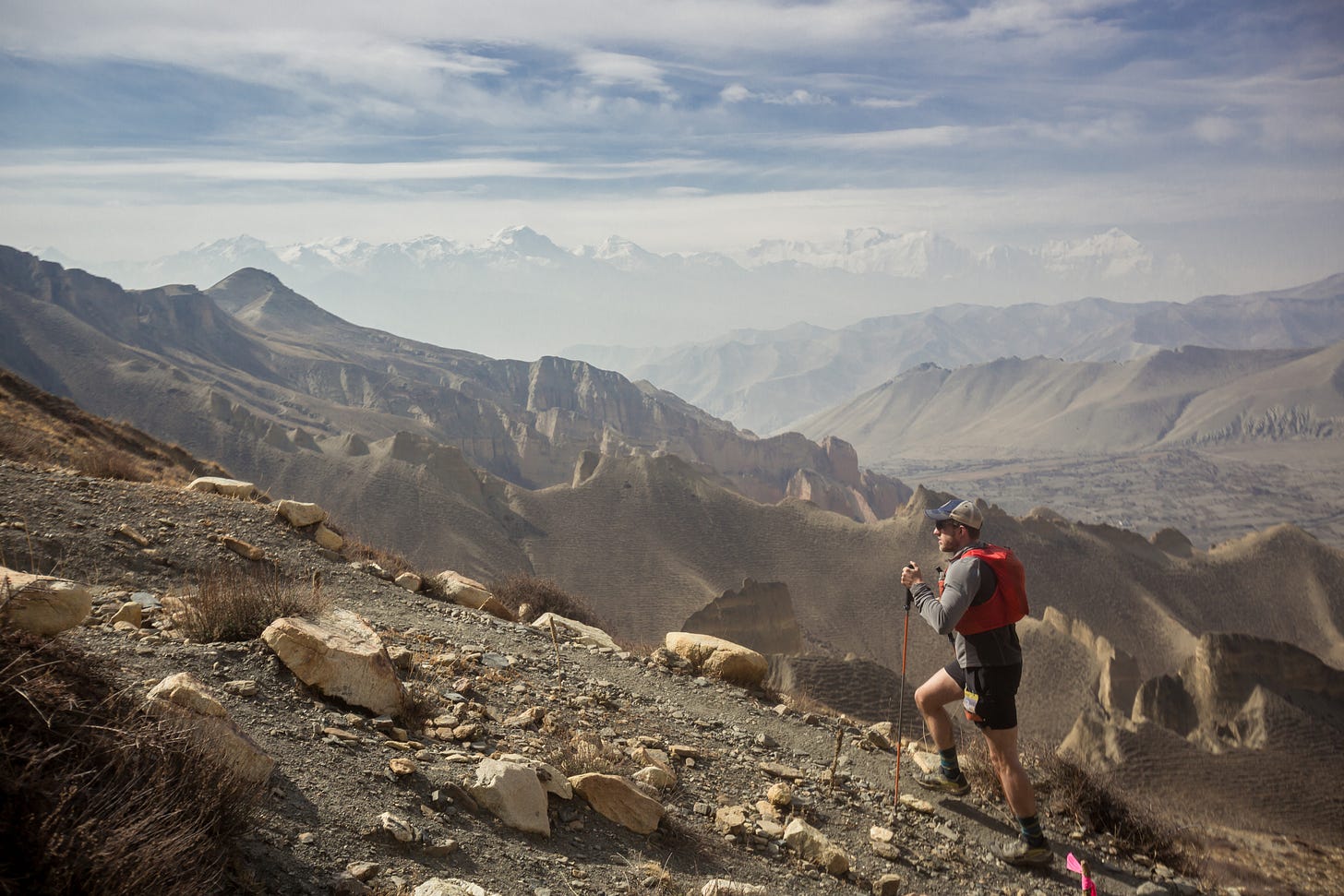I’ve been back from Nepal for a couple of weeks now. In case you haven’t been following along on Instagram, I was there for a couple of weeks to run in the Mustang Trail Race––an eight-stage run totaling roughly 170 kilometers (a bit over 100 miles) and over 4,000 meters of elevation at high altitude.
Naturally, people ask, “How was Nepal?” But it’s impossible to convey just how profound of an experience it was in a kind of digestible snippet that will satisfy itchy, scrolling fingers. Other runners, too, discussed the challenge of sharing their experience with inquisitive minds back home.
The challenge isn’t just coming up with a nice little summary of the trip. The challenge is that, honestly, people don’t really care all that much. That might sound cynical, but it doesn’t make it any less true. They’re just asking to be polite.
When I was in graduate school in Costa Rica, I had to participate in a conflict field training course. Basically, I role played a journalist in a fictional, war-torn Central American country. We’d pause from the scenario every now and again for field training with a Dutch military man. He’d teach us how to make shelter in the woods or how to carry an injured colleague while crawling on the ground.
Given his line of work, he had no shortage of experiences and stories that were impossible to whittle down into something suitable for small talk. He’d meet with friends back home, talk about what he just experienced, and they’d smile and nod before sharing their latest update. It was always something along the lines of: “I just got a new fridge!”
Thus, he dubbed this exchange “new fridge syndrome” both to articulate the chasm between experiences people try to bridge with their latest purchase and the near impossible task of conveying the impact of a rare experience in a way most people back home will appreciate.
Many of the runners in my group agreed that few back home really care about the race or their experience running around Nepal’s wildly remote Mustang region. They’ve done enough of these to know that people are just asking to be nice.
At the airport in Kathmandu, one of the runners suggested coming up with three bullet points. This helps keep your response succinct. I know I have the tendency to ramble on when talking about a trip, met more often than not with a well-meaning smile and some bland response, like, “Sounds cool!”
So, here are my bullet points:
1. I spent most of my time in the Mustang region and stayed in simple guest houses along the way. It was unlike any place I’ve ever visited before. The landscape was mostly barren, but mountainous and beautiful.
2. On the downside, I did get a chest infection and pneumonia and had to miss a couple stages of the race. But I bounced back quickly with antibiotics and was able to finish the last stage.
3. Overall, it was a great experience. It was a privilege to travel to such a remote, unique region of the world that was only relatively recently opened to tourism. I’ll cherish that opportunity forever.
I was in Nepal on assignment to write a story about the Mustang Trail Race for Outside Magazine. So if you are genuinely interested in reading more about the experience, I’ll have a story coming soon and a video to boot.
P.S. The above photos are all courtesy of the race photographer, Ananta Poudel.
In Other News: I’ve started a partnership with Vert.Run, a coaching platform for trail runners. I trialed them leading up to my fastpack of the Via degli Dei in Italy and the Mustang Trail Race in Nepal. I love the interface and ease of communication with my coach. If you’re interested in giving them a shot, you can use the code Joe25 and get 25% off your first 3 months. Do it!






